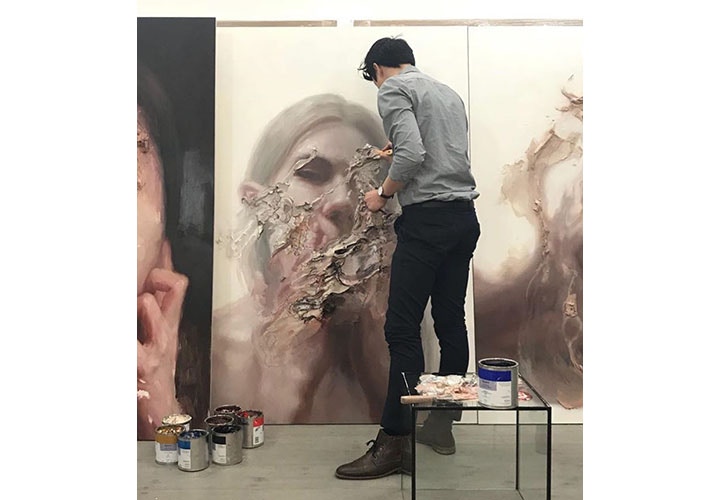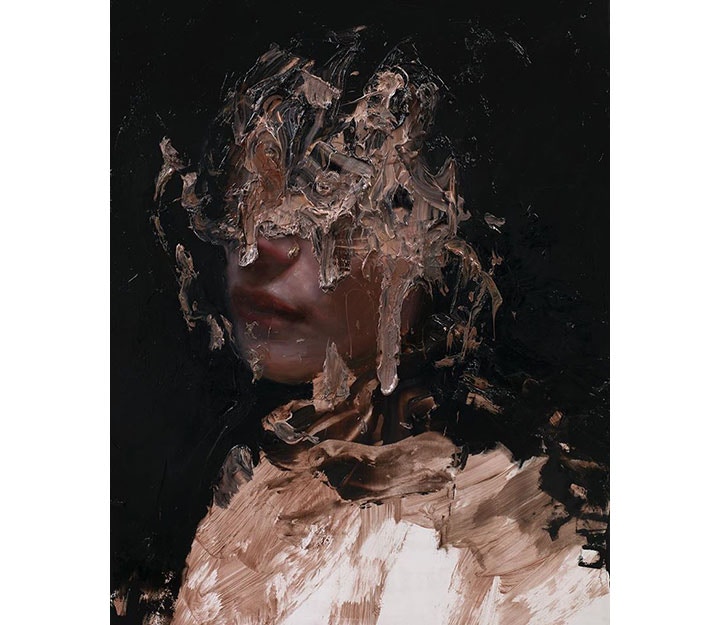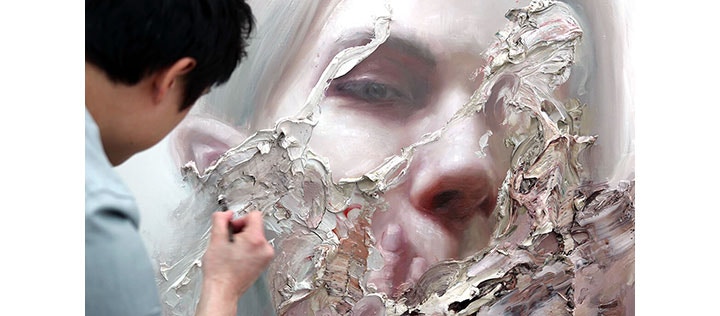Inside the Artists Studio: Henrik Uldalen
Posted by Cass Art on 12th Jun 2020
In this series of blogs we’re looking beyond the artwork and into the artist studio. They are often seen as mysterious creative hubs of liberation and creative endeavour but we want to go inside and uncover the environment in which they work in, to unwrap the mystery and speak to the artists. Discover tips on how to be inspired, find their ‘flow state’ and uncover what the studio means to each artist and how it influences their practice. For the fourth edition we’re delighted to speak with the incredible Henrik Uldalen.
Hi Henrik, thanks so much for taking some out to chat to us. Firstly, what inspired you to become an artist?
Hi guys, my absolute pleasure. I thing I’ve always been meant to be an artist, but it didn’t always look like that. I grew up completely obsessed with drawing and painting, but as any child, never considered it as a profession. It quickly became part of my identity in early school days, as I was a quiet and shy kid not exceeding in many other things. When I started high school, and they spliced quite a few local schools, I realised I was actually just average at best. I decided to not pursue art as a career from that point on. I started studying to become an art teacher, in order to work with arts but also make a living. Here whilst studying I stumbled upon oil paint for the first time, and realised I was able to control this medium much better than any other medium I’ve tried prior to this. I could finally express myself freely. This is the moment I chose to become an artist. It’s like I found my language for the first time. All the things I’ve had burning inside could suddenly unburden me and flow freely.

Your work seems to revolve around classical figurative painting but presented in a contemporary manner. Can you tell us about your painting process in how you’re able to achieve this and strike such a perfect balance of both?
I was always attracted to classical representational painting in my early days of painting because I needed beauty in my life. I never understood conceptual art, and my disinclination to any form of traditional learning made me turn my head more often than not in face with modern art. It took years of classical painting until I one day were just so damn bored with painting and traditional beauty that I turned to conceptual art. I read up, looked more thoroughly, saw it’s impact on society and myself and found that I’ve been missing out on so much in art and life by immediately brushing it off. I went from a purist to someone who believes anything that moves you can be meaningful art. I’m still not at my end goal, and probably never will, but my plans for my art far exceeds were I’m currently at. It’s a long life and I hope to dive into it all.

With the characters you paint; they seem to be in state of limbo existence, present yet somewhat detached from reality. What is the relationship between you and your subjects and how are you able to portray them in this manner?
The subjects of my paintings has always been myself projected onto other bodies, they’re all self-portraits. The core of all my work is always about expressing a feeling or an emotion, good or bad. It’s about the metaphysical, so in order for me to translate that into a physical piece of work I use symbols that for me signifies the inner mindscape.
What role has social media’s influence had on your career?
I love and hate social media. I love working and making art, social media is a job. That said, social media has opened up countless doors for me, and I love it’s democratisation of art. Everyone with internet access can now share their art, find artists and communicate directly with clients, peers and fans. It’s an amazing opportunity. The one big negative side of it is the speed of art and how art is enjoyed. I grew up with books and museums, standing under paintings in the Norwegian national museum for hours, figuring out why the skin tones looks the way it does, flipping through pages until they dissolved in my hands. These days people scroll past paintings in less than a second, when the artist has spent months on it. I catch myself doing the same, it’s a disease. Social media is a great means to introduce people to art, but it’s not where art should be enjoyed. If someone loves an artist online, that someone should do all he/she can to see the art in real life.

What have you been up to during this period of self-isolation?
I have cleaned everything in the house numerous times, I’ve baked, finished Netflix and ranted online. But every day I’ve promised myself to make one painting, just something quick, to remember my day. I can see my mental state in the way I chose to paint. I’ve additionally written down some paragraphs on the back of each piece, talking about my day, like a diary. Some stats about the Covid-19 situation, some news and some personal details about how the day went and what I spent my day doing. These days blend into each other, and if I don’t write them down they’ll surely fade into oblivion.
What materials do you use and why are they important to your practice?
I mostly use Winsor & Newton oil and gouache paints and a ton of brushes. These days as I try out different techniques and mediums I’m a bit all over the place in terms of materials. Anything and everything can be a tool, but there is certainly a few staples that never change.

Could you tell us a little about your studio and studio habits at all, how do you find a state of flow or comfort zone to be able to produce your work?
The studio is a spacious industrial unit in north east London that I share with two other artists at the moment. I like having people around, and find that I spend less time procrastination if there’s people in the studio. I know myself enough to know that I never feel like making art, but I desperately need to in order to have a healthy mental life. I have mapped my own triggers well, and know how to “trick” myself into the right mood to make art. I struggle with many things as most people in life, but the way I now work makes every action more of a victory and more satisfying. I live from victory to victory, and structure and order is paramount in order for me to succeed.

Finally, in today’s day and age where we’re inundated with distractions it’s maybe harder than ever to switch off and focus solely on your creative production. Would you have any advice for someone who is struggling to find that creative flow?
I would start off with having social media hours, where you can allow yourself to use tv, internet, smart phones, but during other hours you’re strictly offline. I start my day very early and try to be productive whilst morning is fresh. The rest feels like a bonus if you do. I immediately sit down and make any piece of quick sketch or study of anything, first thing after coffee in the studio. In that way you’ve already started, and starting is usually the hardest part. Moving on to your main painting is easy when you’re already in the groove and your brushes are wet. This also gets you to race through a ton of seemingly insignificant sketches, but as you work so fast and with so many motives, you will find yourself trying out different things and techniques more frequently, and this is where the magic lies. I’ve personally had a ton of my ideas sprouting out of a sketch I cared nothing for. If you go fishing once a week you’ll get a certain amount of fish, but if you go fishing every day, you should on average get more.
Thanks so much for taking the time to speak to us Henrik, wonderful to get an insight into your practice and studio habits. Very best of luck with the everything in the future.
See more of Henrik's work here.
Shop online for everything you'll need. Don't forget to hashtag #cassart on social media to show us your creations.



